Choosing the best dog food
How do I find the best food for my dog?
We all love sharing some treats with our furry friends, but what we humans eat can be seriously toxic foods for dogs. It is essential to be aware of what is safe and what is not when it comes to your dog's diet. In this guide, we will shed some light on toxic foods for dogs. Also, you will find out the typical symptoms of dog’s food poisoning and intestinal blockage.
Let's keep our furry companions healthy and happy!
In addition to poisoning, some toxic foods for dogs can damage the dog's body in the long term.
Looking for safe treats for your dog? Check out PrimaDog Northern Treats that are made from fresh meat without any grains or added sugar. These treats will make your dog crave for more.
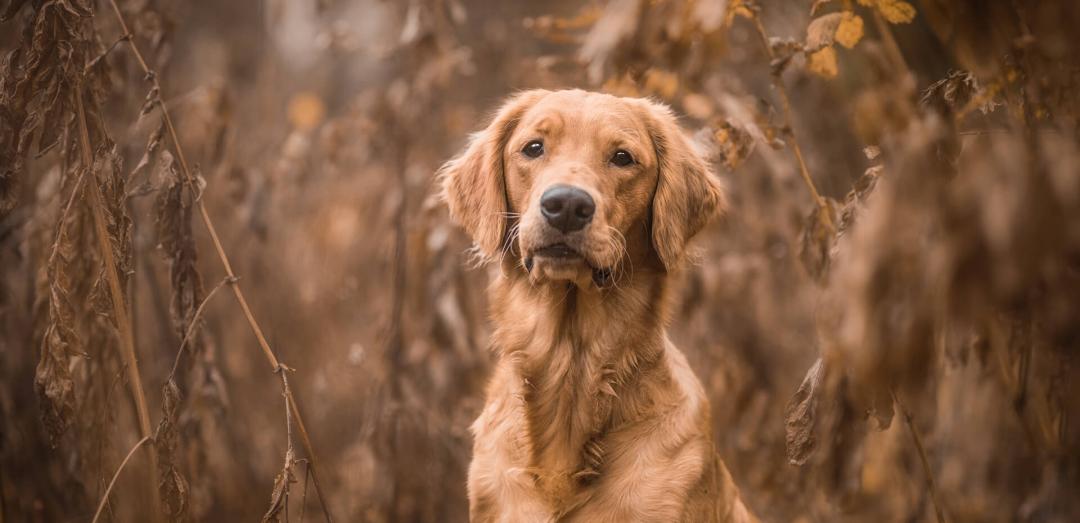
Apart from the toxic foods for dogs, there are some other nibbles that can spell trouble for your furry friend.
Medicine for humans: Only use vet-prescribed medicines. Human drugs, like Ibuprofen, can be highly toxic to dogs.
Cooked bones: If you are thinking of tossing your dog a bone, opt for a raw bone or go for commercial rawhide chew bones. Cooking alters the structure of bones, making them potentially sharp and hazardous for your dog's digestive system. Whether raw or cooked bones, there is also a risk of tooth injury, choking, tummy troubles, and even blockages in the intestines. Keep these risks in mind if feeding your dog raw bones and do not leave the dog alone with a bone.
Corn cobs: While they might look like a tempting thing to chew, steer clear of giving your dog left-over corn cobs. Dog’s intestines cannot digest them, so eating a corn cob can easily lead to a troublesome intestinal blockage.
Commercial chew bones are safer choice for your dog than other bones since they are not as hard, and they are easier to digest. Check out 3 reasons to give your dog a chew bone in a regular basis.
Some dogs have a knack for munching on things they really should not. Whether it is a rogue sock, a chunk of bone that is a tad too ambitious, or even some plastic from the bin, they are not always great at picking their snacks.
Now, here is the serious bit: this kind of munching can lead to a right pickle called intestinal blockage. It is a big deal. This situation can get serious real quick, potentially causing damage to the intestines and other nasty complications, even death. So, if you suspect your furry friend is got himself into a bit of a chewy situation, do not hang about – get them to the vet right away
Always contact your vet, if you suspect your dog has eaten something poisonous or a foreign / sharp object.
When it comes to changing dog food, there are a few situations that may call for it. Whether your furry friend is transitioning from puppy chow to adult kibble, or you need to tweak the dog’s diet for various reasons, it is important to handle the switch with care.
Sudden changes can upset your dog's tummy and leave you feeling frustrated. That is why we have put together this easy-to-follow guide to changing dog food, ensuring a smooth transition.
You should plan a bit ahead before making the switch. Dogs can be sensitive to abrupt dietary changes, so a gradual transition is recommended. Take note of your dog’s normal digestion patterns, as this will help you gauge any changes once you begin the transition process.
Try out the tips in this article for changing dog food and avoid any tummy troubles for your dog friend while saving your own nerves in the food swapping hassle.
There are still a few things you should keep in mind when changing dog food.
Remember, it is not a good idea to switch the dog’s food constantly, especially if the dog has not been exposed to a variety of flavours from an early age.
Patience is the key! Even a couple of weeks might not be enough for your four-legged friend to get used to a new food, so give the dog plenty of time to adjust.

Now, let's talk about sticking to the same brand. If you decide to switch to another type of food within the same dog food brand, it usually goes smoothly since the quality remains consistent. However, if you are changing dog food due to specific issues like tummy troubles, it is best to opt for something completely different. Let's say your dog has been munching on dry food with chicken and rice, so try a grain-free option with a different protein source.
Carefully designed PrimaDog's dog foods nourish your dog’s body and give you a peace of mind, so you can kick back and relax while your furry friend enjoys a taste of Nordic happiness. Learn more about us and our products.
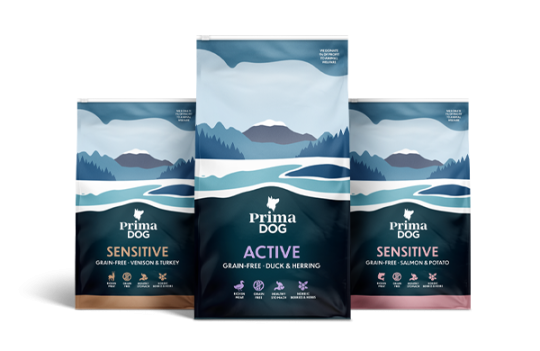
All PrimaDog dry foods include a superfood mixture of healthy Nordic berries and herbs. These natural berries and herbs are excellent sources of multiple vitamins, minerals, antioxidants, and fatty acids. Learn more about the other ingredients used in PrimaDog products.
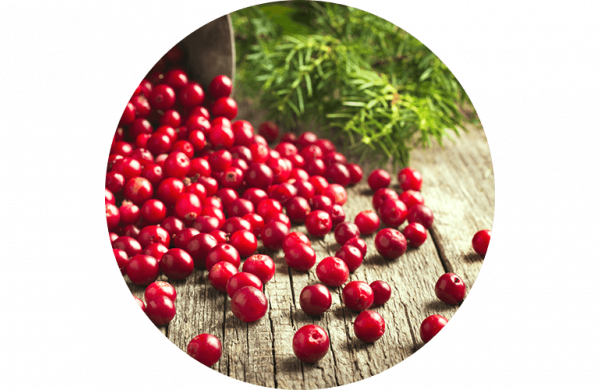
Lingonberries have various health benefits. They contain plenty of organic acids and vitamins, especially vitamins A and C, and folate. Lingonberries are a good source of fiber and manganese, potassium, calcium, magnesium, and phosphorus. In addition to these nutrients, they also contain phytochemicals called proantocyanidins (the PAC's) which are beneficial for urinary-tract health.
Cloudberries are rich in vitamins A, E and C, and folic acid. They also contain essential omega-3 and omega-6 fatty acids, antioxidant polyphenols and more fibers than other wild berries. Cloudberries can help to prevent harmful bacteria to grow in the colon, improve digestion and support the immune system.
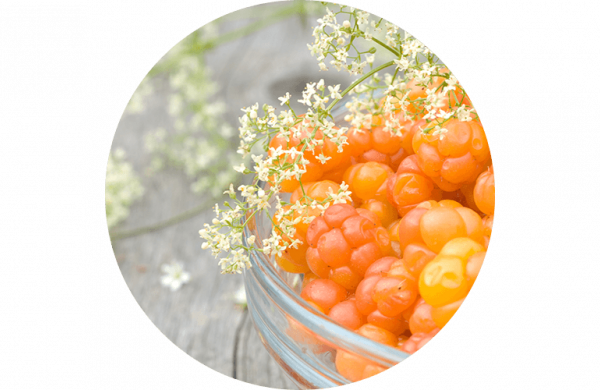
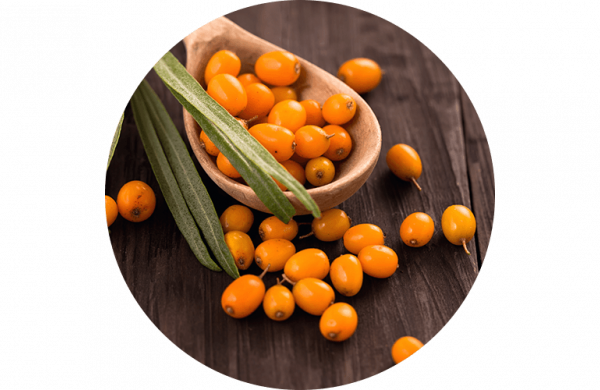
Sea buckthorn berry consists of various vitamins such as K, C, A, E, and folic acid. It contains over 60 antioxidants, at least 20 minerals, and healthy fatty acids including omega-3, -6, -9 and the rare omega-7. Sea buckthorn has high anti-inflammatory properties, and the berry is good for skin and mucous membranes.
The dill plant can support digestive functions, help with stomach issues, and improve the immune system. It is also good for the respiratory tract and can freshen the airways. The health benefits of dill are derived from its organic compounds, vitamins, and minerals. It contains for example flavonoids, vitamins A and C, folate, iron, and manganese.
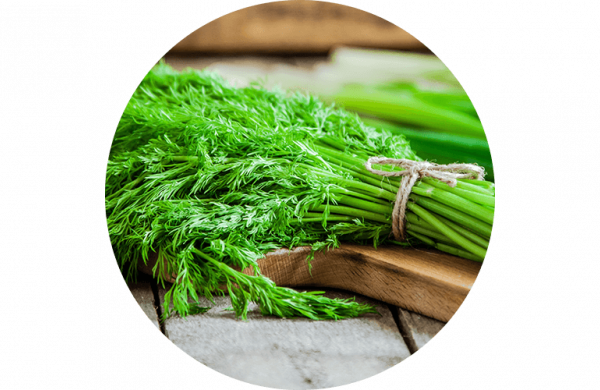
Dog treats are not just a fantastic aid in training your dog, but they are also a delightful way to pamper your four-legged companion. Studies have shown that positive training methods, which include rewarding your dog with tasty dog treats or their favourite toys, are the most effective for both dogs and other animals alike.
In this article, we will guide you on how to choose the most suitable dog treats for your furry friend according to their needs, and how many treats you can give to your dog.
When it comes to choosing the right dog treats for your pet, there are a few tips to consider.
How many treats you will need? If you are in the middle of training sessions, you might find that you go through a packet or two of treats without even realizing it. In this case, it is best to opt for low-fat dog treats with less than 5% fat. Try out PrimaDog grain-free Wild Bites Duck with Echinacea treats that are rich in meat and easy to divide into smaller pieces if needed. They are sure to be a hit with your dog!
Using kibble as fun training treats. Your furry friend does not always need to munch on kibble from a bowl; you can also use kibble as a training reward. This way, training treats become part of your dog's daily meals. If your regular dry food is not enticing enough for your dog, try different flavoured or slightly fattier dry food.
Dog treats and chews should only make up to 10% of your dog's daily energy needs. Treats should never replace their daily meals. Read more about dogs’ nutritional needs to keep them healthy and happy.
Struggling with a picky dog? If your dog is more interested in its own activities, even if your pockets are bulging with dog treats, the solution is to find even more tempting treats! Opt for fresh meat dog treats, such as PrimaDog Northern Treats. These grain-free and irresistibly delicious treats can be easily divided into smaller pieces without crumbling. Give your dog a whole Northern Treats meat stick as a generous reward for something like a perfect recall.
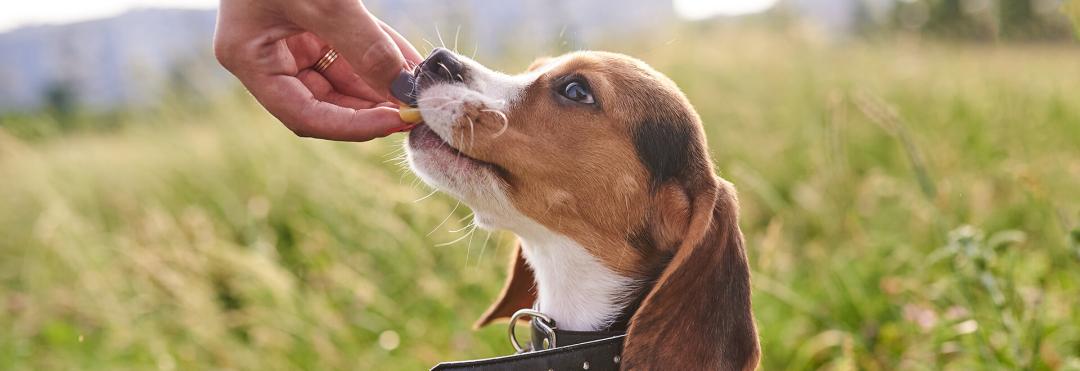
In the PrimaDog range you will also find chicken-free dog treats. Wild Bites Herring with Cloves and Wild Bites Lamb with Sea Buckthorn contain no chicken at all. In addition, all Wild Bites treats are grain-free. Read more.
Try wet dog food as a reward. Using wet food as a training reward might seem messy, but it can be an excellent treat for many dogs. PrimaDog's grain-free Mini Meals are handy to use as a reward and the food can be given during training sessions straight from the pouch. Mini Meals stay fresh at room temperature when unopened. You can also tip wet dog food into a bowl if your dog has earned a full pouch for being a good lad or lass.
Create a surprise treat pouch. Why not whip up a treat pouch for your furry friend, mixing the dog’s top treats with some kibble? It is a brilliant way to keep the dog guessing and eager to see what treat pops up next.
Mix up your dog's snack time by chopping and popping PrimaDog wheat-free sausages for dogs in the freezer. Explore the products.
Your dog's size really matters when picking out snacks. Bigger dogs will need chunkier treats to keep them interested, while tinier dogs will do better with smaller bites. For the little sport dogs, using their daily food as a reward is a smart way to keep their treat intake on track. Take a Papillon dog under five kilos, for instance, they only need a small handful of treats to hit 10% of their daily energy needs.
Consider the type of training you are treat shopping. With agility and obedience training, you want your dog to wolf down treats on the move, so go for soft, bite-sized bits that can be gulped down without a fuss. For a more laid-back vibe, like after a good nail trim or a bit of grooming, larger, chewier treats are spot on, letting your dog really savour the moment.
Is your dog allergic or sensitive to certain ingredients like grains or specific protein sources? Remember to check the packaging of the dog treats to make sure they are suitable for your dog.
Do you know why it is worth giving your dog chew bones regularly? Read our article on the benefits of chewing chew bones.
PrimaDog dog treats are always wheat-free, and we have got loads of grain-free choices too. You are bound to find something that will make your dog's tail wag. Explore the wonderful world of dog treats and find the perfect treat for your furry friend today!
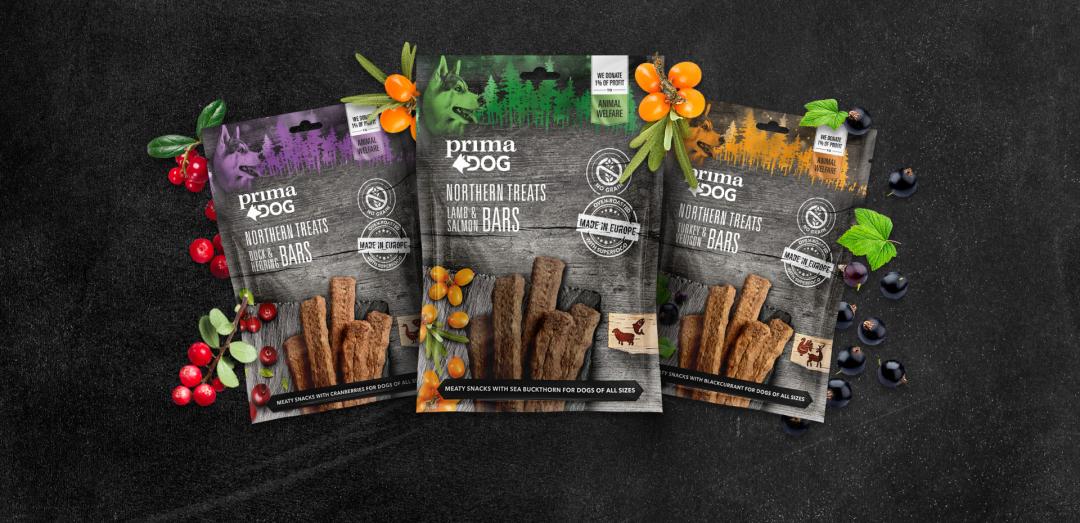
Feeding a dog is not rocket science – simple moves can do the trick. Basically, our furry friends are meat lovers who need animal-based protein in their diet.
Animal-based proteins, like meat or fish, are important building blocks for your dog's body, and animal fat fuels the dog’s engine. The belly machinery of dogs actually runs smoothest on a meaty diet. That is why the main ingredient in PrimaDog dog foods is always meat or fish. Check out this article for tips on feeding a dog.
Feeding a dog can be a breeze with all-in-one chow, like dry dog food. Meaty and high-quality complete dog foods make dog feeding worry-free, packing in all the essential nutrients in the right proportions.
But can a dog roll on dry dog food alone? At PrimaDog, we recommend a simple but varied food pyramid with a solid base of high-quality kibble or other kind of complete dog food. Different wet dog foods, sausages for dogs, meat, fish, and eggs are like the secret sauce for boosting your dog’s diet.
Interested in spicing up your dog's dining routine? Dive into our tips for adding variety to your dog’s meals!
When 70 % of the dog’s daily food is complete dog food, the dog will get all the nutrients it needs. You can replace the rest 30 % with fresh meat, fish, or other ingredients suitable for dogs.
Got a dog with a sensitive stomach or itchy skin? Grain-free dog food might be the answer. Get the scoop on grain-free diet and feeding a dog with sensitive stomachs.
PrimaDog wet dog foods and sausages for dogs are complete dog foods that suit perfectly for your dog’s daily meals or to jazz up the dog’s chow routine. Take a peek at the goodies.
Check the dog food packaging. The feeding instructions on dog food packages provide a rough idea of how much food to give to a dog of a certain weight. But hey, do not rely on them blindly, as factors like the dog's age, activity level, and whether the dog is carrying a bit of extra padding all play a part when trying to figure out the right food portion.
Measure portions. When scooping on kibbles, measure them using a coffee mug or other kind of a measuring cup. That way, you can keep track on how much your furry friend is eating each day and adjust the food amount without any fuss.
Dog food type matters. Wet dog food has water in the mix, so you should give it to the dog twice as much as the kibble.
Keep an eye on your dog’s weight. If your dog is on the chubby side of the scale, there is a chance it could lead to some health hiccups. You can monitor your dog's weight not only by using a scale, but also by estimating the so-called body condition score.
A dog with the perfect amount of padding won't show their ribs but will have them easy to feel. When you look at the dog sideways, there should be a waistline action going on. And peeking from above, you should totally spot a waist too. If you are digging around for those ribs under a layer of cushion and the waistline is playing hide and seek, it might be time for a diet plan.
So, what is the best way to tell if your dog is on the right food track? Surely the dog itself! When feeding a dog right, its weight is not going on a rollercoaster, and the dog is up for some tail-wagging playtime and good strolls.
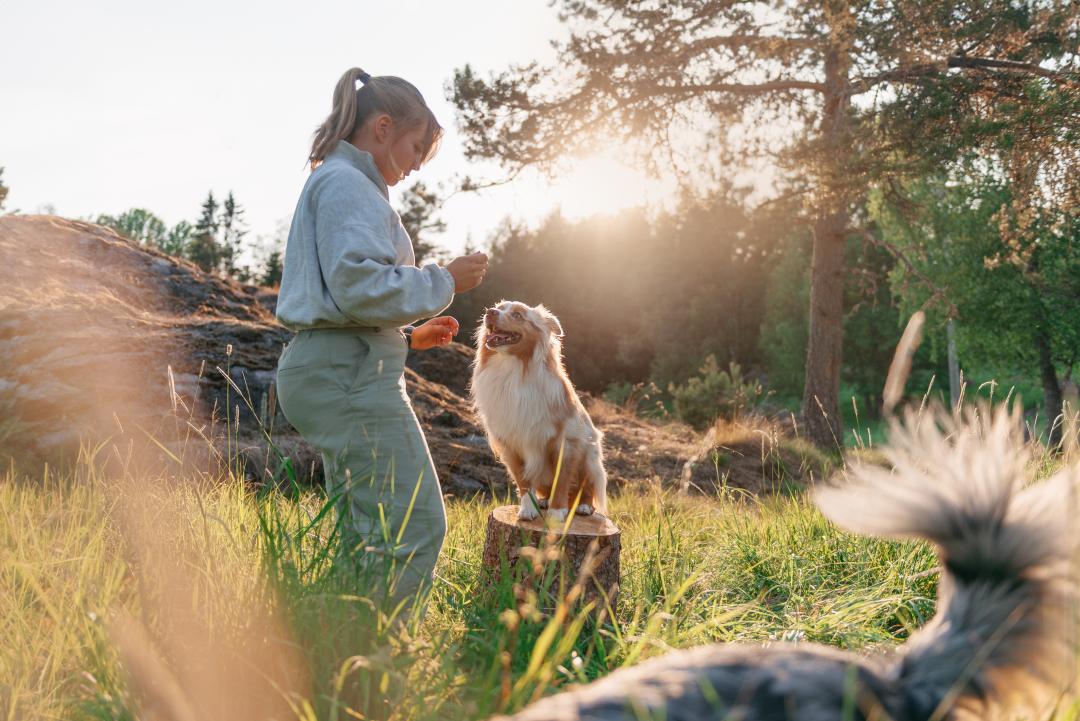
An adult dog usually eats 1–2 times a day.
8–12 weeks old puppy should eat 3–4 meals per day. When your tiny rascal hits six months of age, you can start feeding it twice a day. But what to feed to these mischievous little ones? Read our tips on feeding a puppy.
If your furry friend is prone to stomach upset or acid reflux, the day's food can be split into 3–4 small meals. This may ease the symptoms of acid reflux and bilious vomiting syndrome, i. e. vomiting on an empty stomach.
Fill your dog’s food bowl with PrimaDog’s wheat-free or grain-free dry food and let your dog enjoy nutritious meal packed with meat. Do not know where to buy? Find the nearest retailer!
Feeding a dog that is full-grown starts with figuring out what kind of character your tail-wagger is. Is your dog comfort-loving couch potato, an active adventurer, or somewhere in between? Many dogs exercise for a moderate 1–2 hours a day. For this kind of a dog dry food with around 25% protein and about 15% fat is usually a good choice. Read more about how to find the right food for your dog.
An active sporting, working or hunting dog usually needs more protein and fat in its diet than a dog that mainly goes on regular walks. We have got some pointers on sizing up your dog's activity and how to keep your active exerciser well-fed. Read more about feeding an active dog.

Are you looking for a reliable go-to option for your furry friend, that makes feeding a dog a breeze? Check out PrimaDog dry foods and give your dog a taste of Nordic happiness.